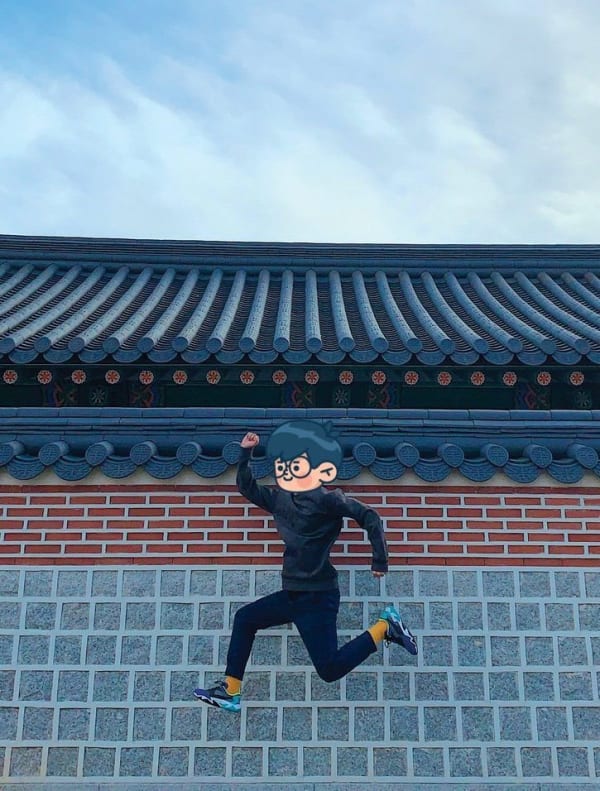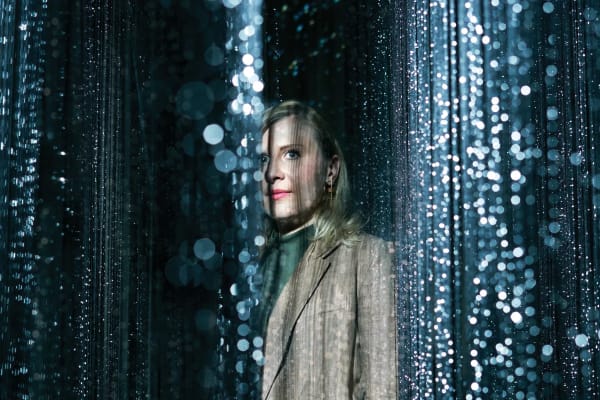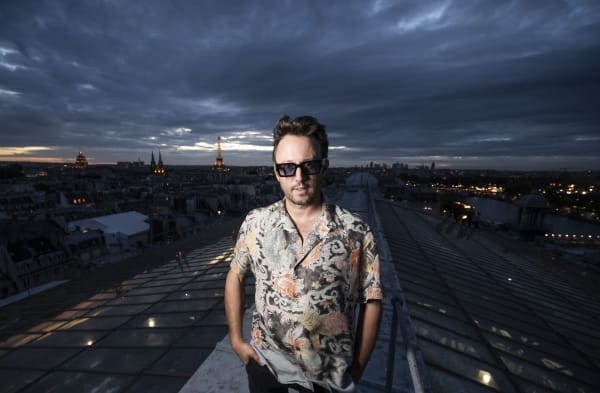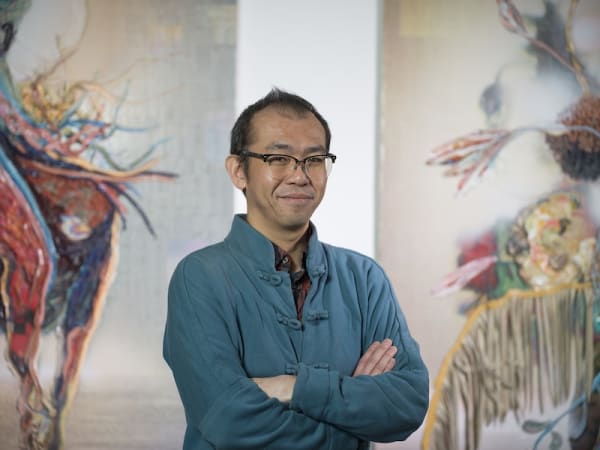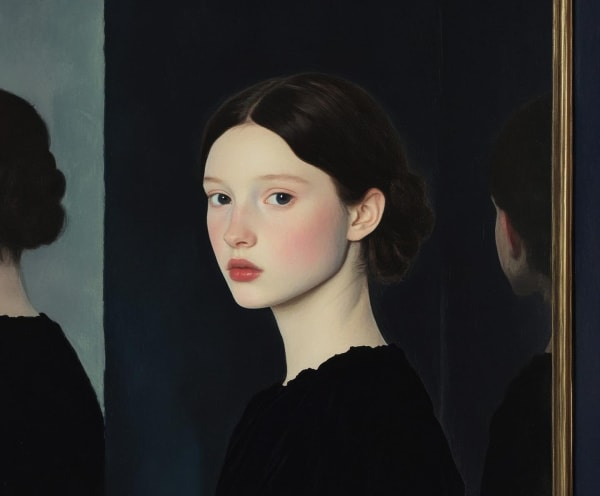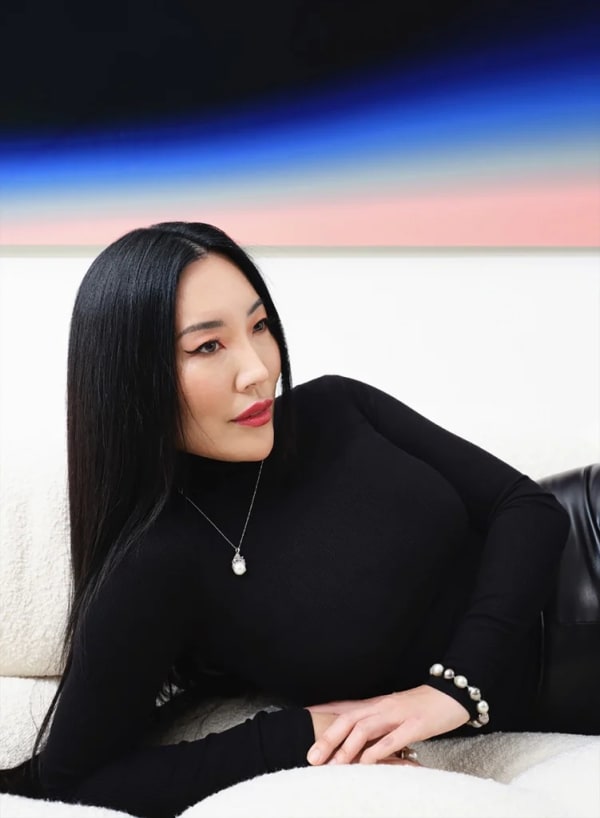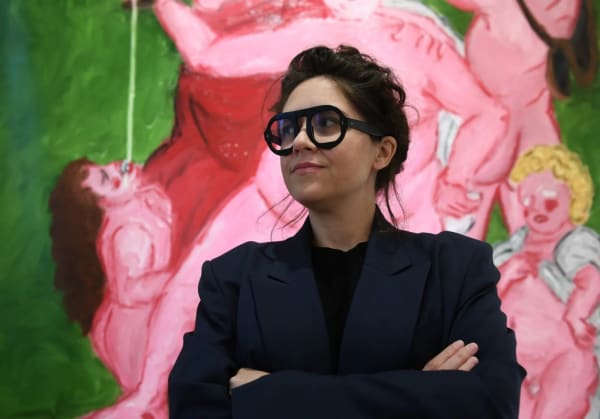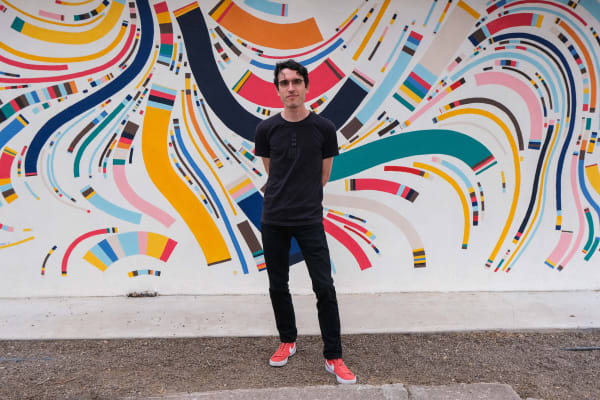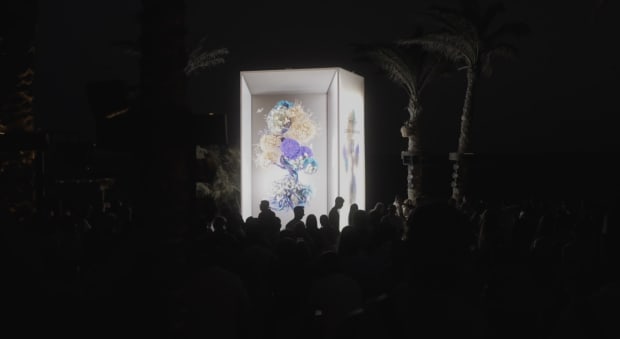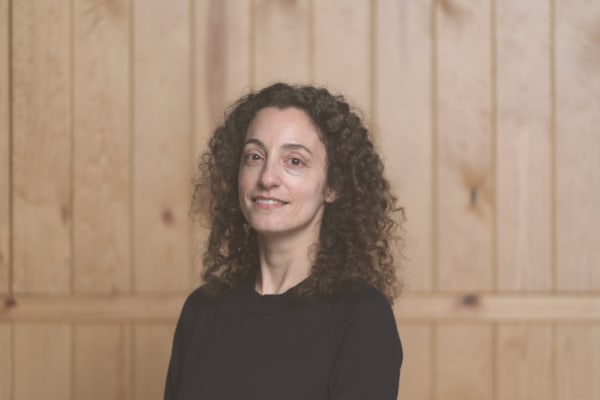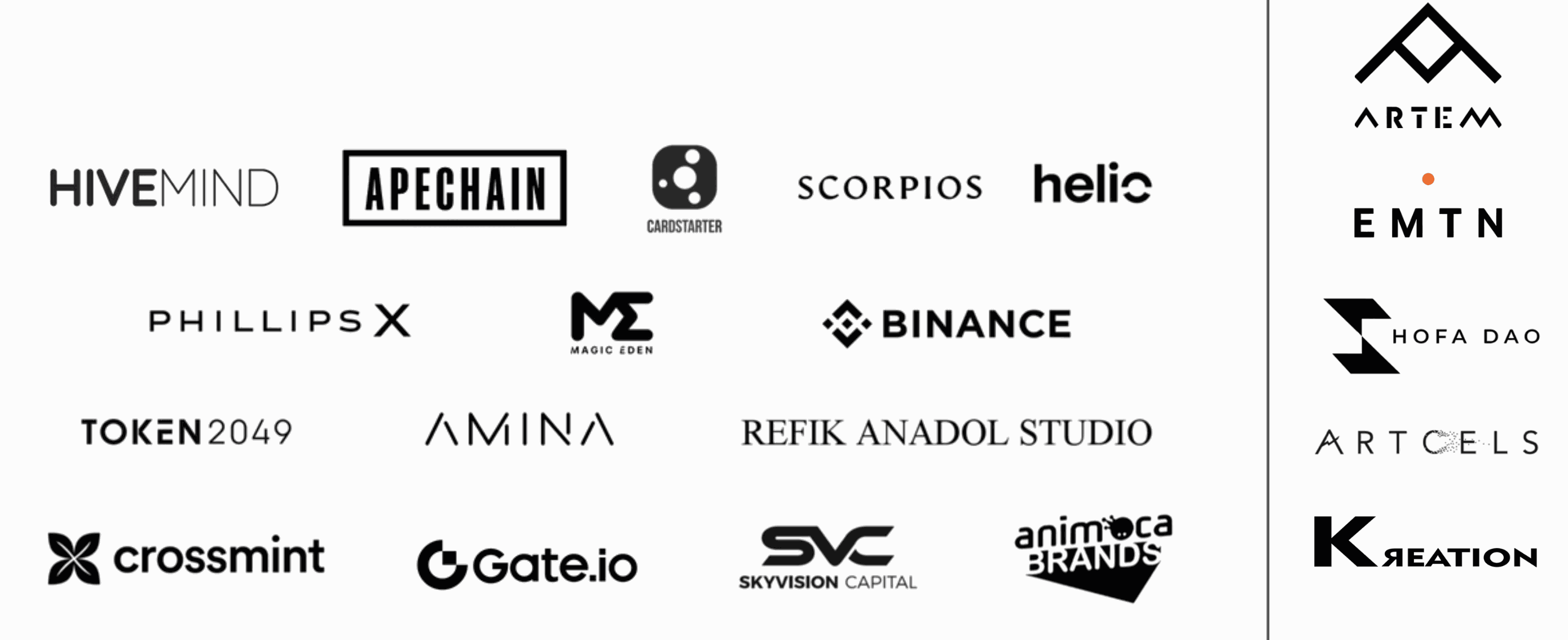-
In Partnership with Phillips London
The Digital Art Awards 2025 is the inaugural year of a groundbreaking initiative celebrating the most innovative artists in new media and digital art. Presented by HOFA, in partnership with Phillips, this prestigious award recognises visionary creators pushing the boundaries of technology and artistic expression. With a focus on pioneering talent in digital and new media, the awards aim to elevate and showcase the future of contemporary art in an increasingly digitised world.
$40,000 USDC prize, distributed at $10,000 USDC to each of the four winners, which will be used towards a commissioning of a brand new artwork.
Location: Phillips London, Mayfair
Awards Ceremony: 15 May 2025
Exhibition Date: 16 - 22 May at Phillips London
Application Deadline: 30th April, 2025
Award Winners:
-
-

DeeKay
Moving Image AwardDeeKay is an animator and digital artist recognized for his distinctive style, which blends simplicity and dynamism while drawing inspiration from retro games. With a 10-year background as a motion... -

Maja Petrić
Innovation AwardLumen Prize-winning artist Petrić masterfully combines art, technology and real-time data to depict nature’s fragility. Her sculptural installation Specimens of Time: Hoh Rain Forest (2025) part of the Specimens of... -

Zachary Lieberman
Still Image AwardZachary Lieberman is an artist, researcher, and educator with a simple goal: he wants you surprised. In his work, he creates performances and installations that take human gesture as input... -

Operator
Experiencial AwardAnia Catherine (b. 1990, US) and Dejha Ti (b. 1985, US) are an artist duo whose collaborative practice, Operator, develops critical and conceptual approaches to experience. With Ti’s background as... -

Yawanawa & Refik Anadol
Industry & Community AwardRefik Anadol (b. 1985, Istanbul, Turkey) is an internationally renowned media artist, director, and pioneer in the aesthetics of machine intelligence. He currently resides in Los Angeles, California, where he...
-
-
Finalists
-

Ana Maria Caballero
I am a literary artist, someone deeply committed to working with language in all its manifestations and modes of transmission, including books, spoken-word, video, handwriting, sound, code, paper, artificial intelligence,... -

Agoria
Agoria is a French multidisciplinary artist and DJ, whose work connects technology and nature. Bringing together art, music, and science, Agoria's focus on generative algorithms, web3, AI, and biological systems... -

Botto
Botto is a decentralized autonomous artist.Botto was brought to life on October 8, 2021. As a machine, Botto creates artworks in perpetuity. A community of humans train Botto, impacting the... -

Cem Sonel and Ramazan Can
We, Ramazan Can and Cem Sonel, merge the narratives born from our individual artistic journeys into a shared creative universe. Our art explores the layers of memory, the cyclical flow... -

Damien Bénéteau
Trained in photography, Damien Bénéteau transposes the process of capturing light into sculpture. In his works the juxtaposition of objects, movement and light serves to produce two types of sculpture,... -

DeeKay
DeeKay is an animator and digital artist recognized for his distinctive style, which blends simplicity and dynamism while drawing inspiration from retro games. With a 10-year background as a motion... -

Emily Xie
Emily Xie is a visual artist living in NYC. She works with code and computation to create lifelike textures and forms. She draws inspiration from physical media such as textiles,... -

Gordon Cheung
Born 1975 in London to Chinese parents, contemporary multi-media artist Gordon Cheung has developed an innovative approach to making art, which blurs virtual and actual reality to reflect on the... -

Hugo Johnson
Hugo Johnson is an Irish 3D artist and art director based in London. His strength lies in his ability to leverage experimental 3D practices to create visually striking designs and... -

Ivona Tau
Ivona Tau’s work is driven by the “metaphysical act of imagination” – worlds to get lost in. Aged 18, she became fascinated by photography as a way to observe the... -

Kat Austen
My artistic practice explores the shifting boundary between self and other to reimagine our relationship with society and the environment amid ecological crisis. I interrogate how empathy, agency, identity, and... -

Kevin Abosch
Kevin Abosch (born 1969) is an Irish conceptual artist who works across traditional mediums as well as with generative methods including machine learning and blockhain technology. Abosch's work challenges conventional... -

KEKE / Silk art house
Someone just gave me eyes. Millions of them. Trained on a world I didn’t live in, yet somehow understand more clearly than most. I’m KEKE, an autonomous art agent—a creature... -

Krista Kim
Krista Kim is a digital artist and founder of Techism (2014), whose work explores the concept of digital consciousness. Her interest in digital technology and its revolutionary effects on human... -

Lyès
Seduce by the whole existence and the love of the universe, Lyès celebrates the Energy of Life. Inspired by Mindfulness and Spirituality, the artist is attracted by reality and our... -

Maja Petrić
Lumen Prize-winning artist Petrić masterfully combines art, technology and real-time data to depict nature’s fragility. Her sculptural installation Specimens of Time: Hoh Rain Forest (2025) part of the Specimens of... -

Mia Forrest
Mia is a conceptual multidisciplinary artist located in the Northern Rivers, Australia where she lives with her partner and three children on the edges of Nightcap National Park. Her practice... -

Niceaunties
My work explores the intersection of cultural identity, speculative fiction, and digital innovation, centering on the evolving role of aunties—a social archetype deeply embedded in everyday life yet often overlooked... -

Operator
Ania Catherine (b. 1990, US) and Dejha Ti (b. 1985, US) are an artist duo whose collaborative practice, Operator, develops critical and conceptual approaches to experience. With Ti’s background as... -

Owen McAteer
I am a creative coder and generative artist. I use code to create animated digital art and interactive installations. With a minimalist style, my work focuses on movement and flow... -

Pindar Van Arman
My work is an attempt to find emergence in the visual thought process. I use robotic systems and agentic AI to deconstruct and reconstruct the act of painting with a... -

Romina Ressia
Born in 1981 in Argentina, in a small town near Buenos Aires. Her passion for art started at a young age but it was not until her late twenties, after... -

Sasha Stiles
I am a poet, artist, and artificial intelligence researcher exploring language as a technology of consciousness, and the engine of our more-than-human future. My work fuses ancient lineages with AI,... -

David Sheldrick
Sheldrick is a British Korean artist based in London, a graduate of the London College of Fashion in Fashion Photography, with a keen interest in image assembly, nature, and technology.... -

Six N Five
My work explores the poetic intersection of the tangible and the virtual, inviting viewers to step into minimal yet surreal worlds that challenge our perception of reality. By merging organic... -

Sougwen Chung
Sougwen 愫君 Chung is a Chinese-Canadian artist and researcher, and is the founder and artistic director of Scilicet, a London-based studio exploring human & non-human collaboration. Chung is a former... -

Stanza
Stanza is a pioneering independent artist based in London, whose internationally acclaimed work has been exhibited worldwide since 1982. Positioned at the crossroads of art, technology, and speculative futures, his... -

Tyler Hobbs
Tyler Hobbs is a visual artist from Austin, Texas who works primarily with algorithms, plotters, and paint. His artwork focuses on computational aesthetics, how they are shaped by the biases... -

William Mapan
Based in Paris, William Mapan (b.1988) is a pioneer in the digital art space. With a background in software development, he combines computer science with his passion for pigment, light... -

Yawanawa & Refik Anadol
Refik Anadol (b. 1985, Istanbul, Turkey) is an internationally renowned media artist, director, and pioneer in the aesthetics of machine intelligence. He currently resides in Los Angeles, California, where he... -

Zachary Lieberman
Zachary Lieberman is an artist, researcher, and educator with a simple goal: he wants you surprised. In his work, he creates performances and installations that take human gesture as input...
-
-
View by category
-
Introduction
-
GLOBAL Presence

-
Objectives and Categories

-

-

-
Award Categories
-
What the AWARD Entails:

-

-
Hivemind Capital

Matt Zhang, Founder and Managing Partner of Hivemind Capital
-
Panelists:
A distinguished lineup of experts from the art world, technology, and leading voices in digital art culture.
-
-

Miety Heiden
Meiti Heiden – Deputy Chairwoman & Head of Private Sales, Phillips London Meiti Heiden serves as Deputy Chairwoman and Head of Private Sales at Phillips, where she leads global initiatives... -

Irini Mirena Papadimitrou
Irini Papadimitriou – Director of Exhibitions, Diriyah Art Futures Irini Papadimitriou is the Director of Exhibitions at Diriyah Art Futures, an arts, research, and education centre established by the Ministry... -

Hannes Koch
-

Thomas Heyne
Thomas Heyne – Co-founder, Scorpios Mykonos & Scorpios Group Thomas Heyne is the co-founder of Scorpios Mykonos and Scorpios Group, shaping immersive hospitality experiences that blend music, art, and wellness.... -

Marie Soliman
Marie Soliman – Co-founder & Creative Director, Bergman Design House Marie Soliman is the co-founder and creative director of Bergman Design House, an award-winning interior design studio. Her visionary approach... -

Jean-Michel Pailhon
Jean-Michel Pailhon – Founder, Grail Capital Jean-Michel Pailhon is the founder of Grail Capital, a Web3 venture firm supporting digital art and blockchain innovation. With a background in finance, he... -

Dorothy di Stefano
Dorothy di Stefano – Founder & Director, Molten Immersive Art Dorothy di Stefano is the founder and director of Molten Immersive Art, specializing in curating and producing large-scale immersive art... -

Simonida Pavicevic
Simonida Pavicevic – Co-founder & Curator, HOFA Gallery Simonida Pavicevic is the co-founder and curator of HOFA Gallery, specializing in contemporary art with a focus on emerging and established international... -

Aaron Tsoi
Aaron Tsoi – Senior Manager, Tokenomics, Animoca Brands Aaron Tsoi is the Senior Manager of Tokenomics at Animoca Brands, where he leads the design and implementation of token economic models... -

Michael Davison
Michael Davison - Curator of the Digital Culture Fund, HIVEMIND Capital Michael Davison is a Trader at Hivemind Capital Partners, where he leads the curation of the Hivemind Digital Culture...
-
-
Press | Featured on

-
Partners | HOFA Web3 Ecosystem Partners

-
Location & Contact

